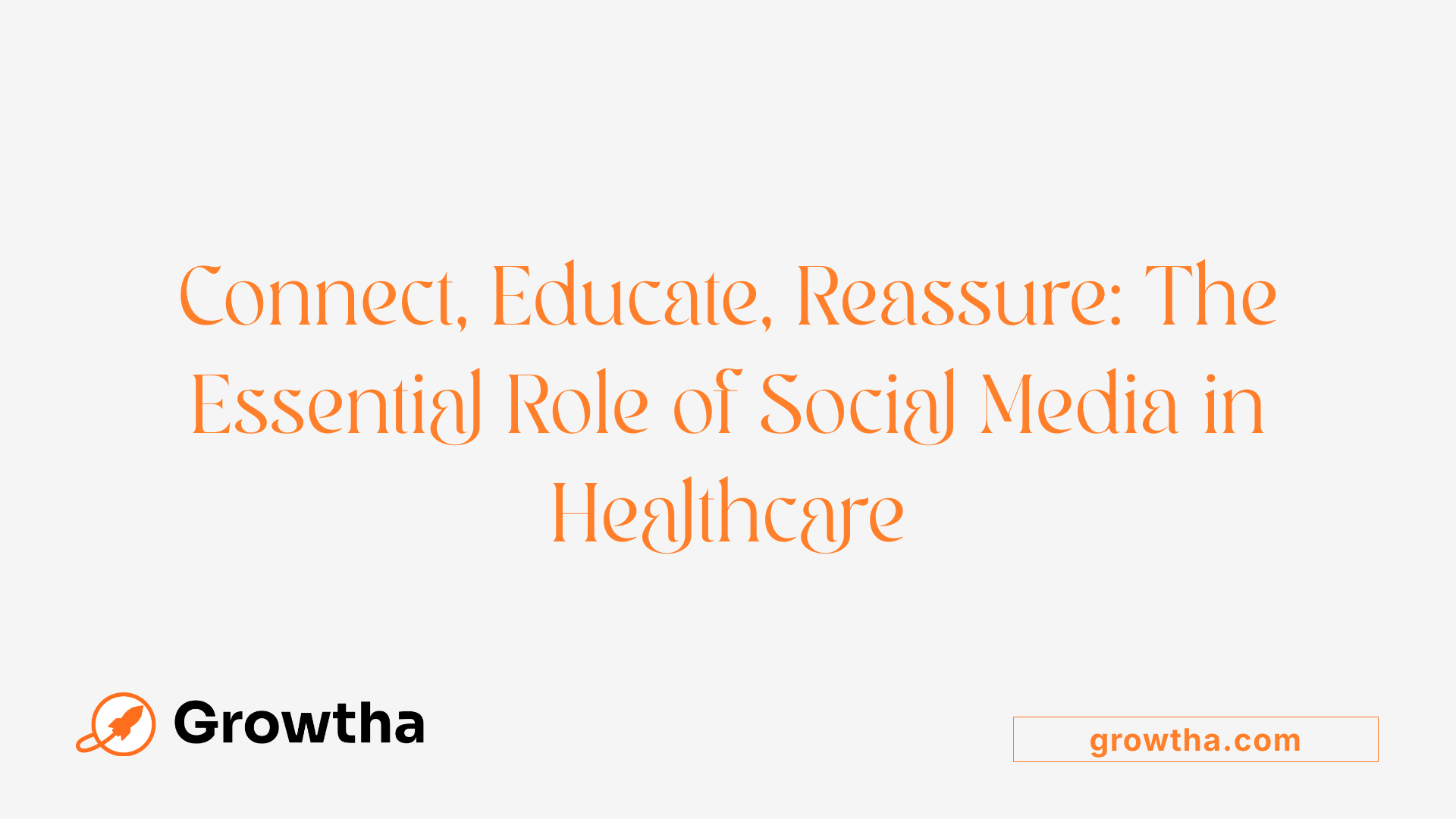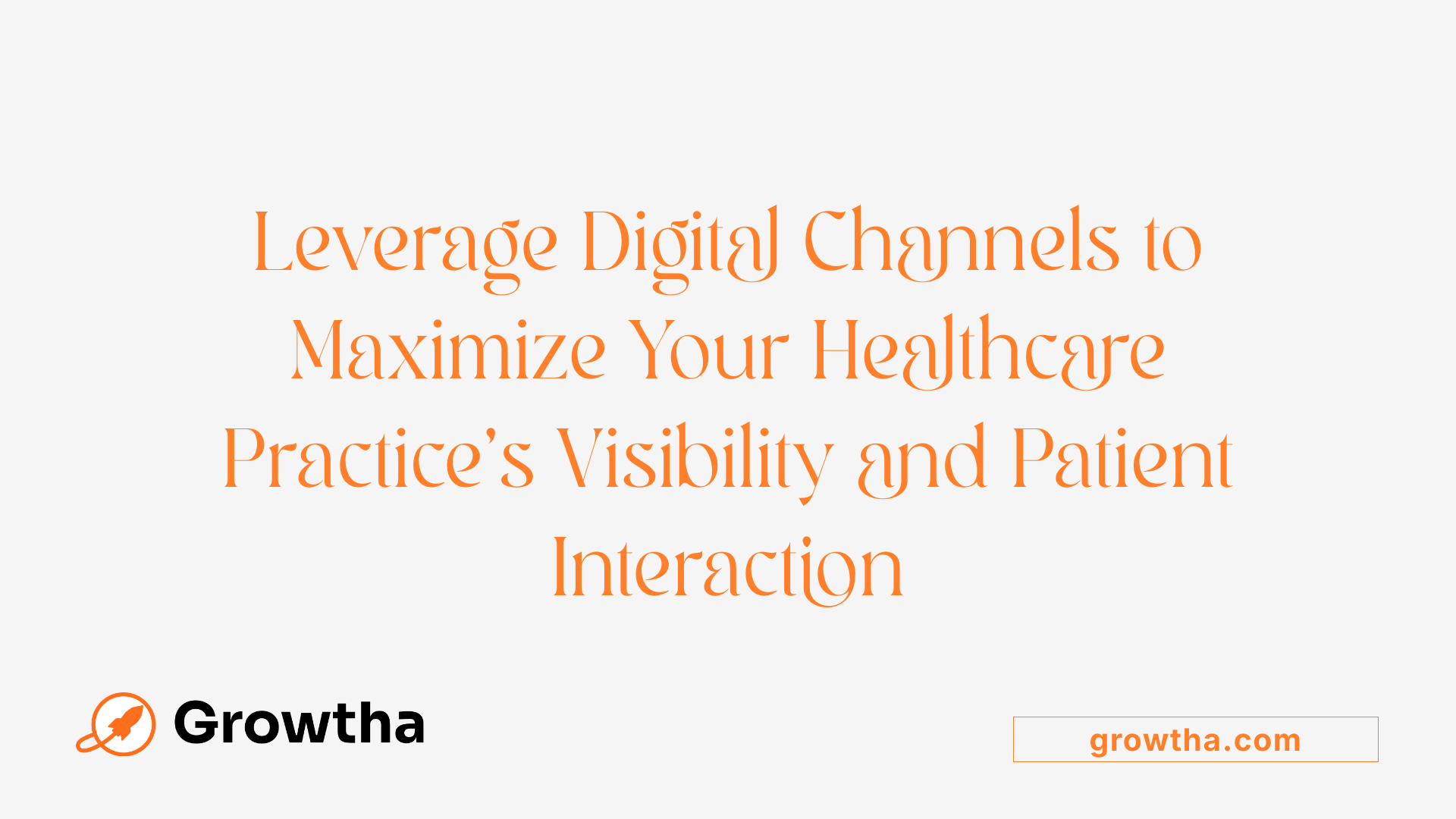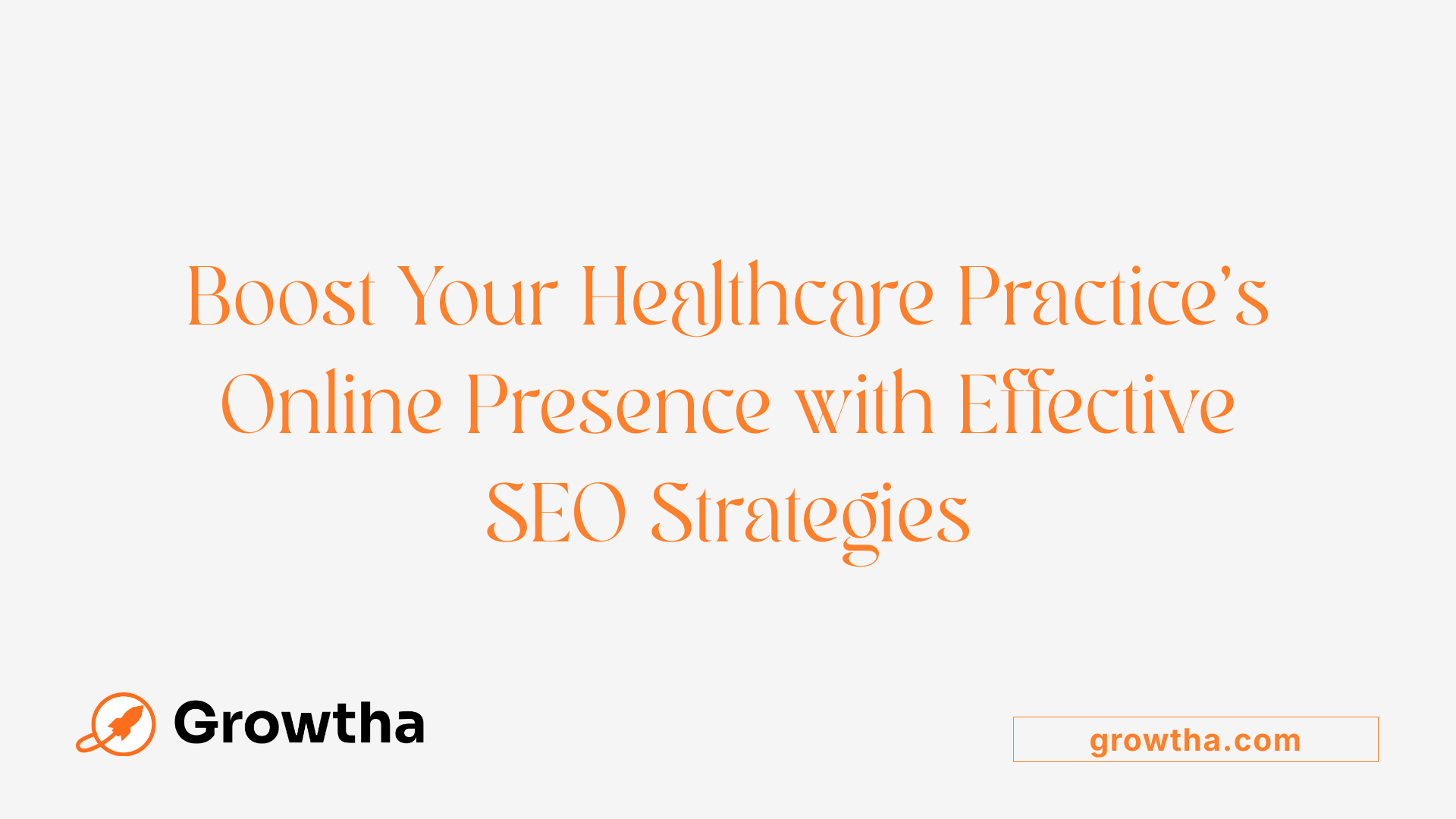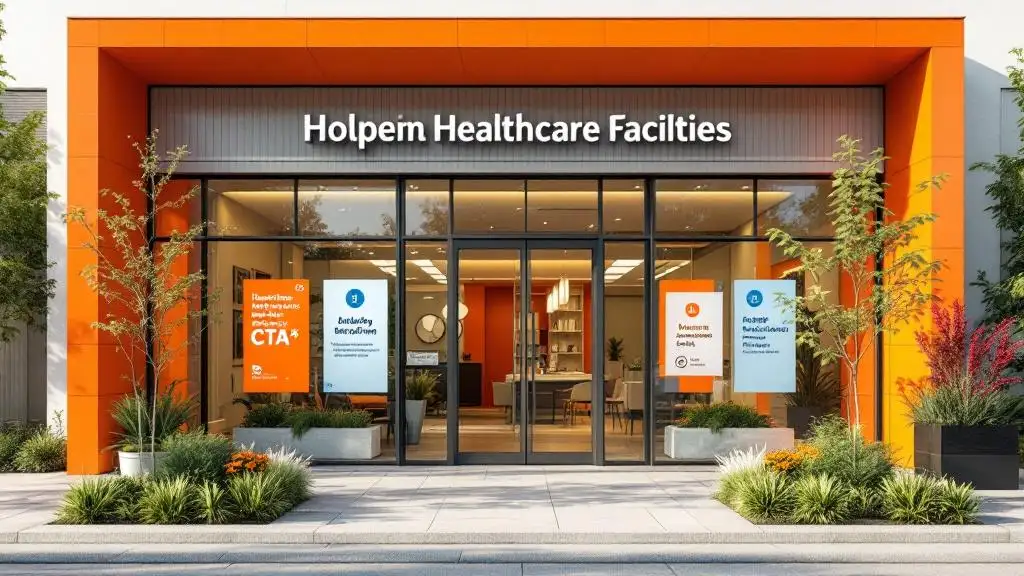How to Combine SEO and Social Media in Healthcare Marketing
Maximizing Impact: Synergizing SEO and Social Media in Healthcare Marketing


How to Combine SEO and Social Media in Healthcare Marketing
Unlocking the Power of Digital Integration in Healthcare
In the rapidly evolving landscape of healthcare marketing, integrating SEO and social media strategies has become essential for practices seeking to enhance visibility, build trust, and engage effectively with patients. This comprehensive approach leverages the unique strengths of both digital channels to create a powerful, cohesive marketing ecosystem. As 75% of patients now search online before making healthcare decisions, understanding how to merge these tools strategically offers a competitive edge in attracting and retaining patients in a highly regulated environment.
The Crucial Role of Social Media in Healthcare Marketing

What role does social media play in healthcare marketing?
In 2024, social media has become an indispensable part of healthcare marketing strategies. It provides healthcare organizations with powerful tools to build trust and authority while connecting directly with patients, providers, and other stakeholders. Through platforms like Facebook, Instagram, TikTok, LinkedIn, and Twitter, healthcare providers can communicate their expertise, share success stories, and deliver crucial health information.
Social media enhances content dissemination, allowing organizations to publish industry updates, patient testimonials, and educational materials that reach a broad audience quickly. This wide reach helps in establishing credibility, fostering community engagement, and promoting relevant health initiatives.
Beyond outreach, social media supports relationship-building with decision-makers, industry partners, and patients. Personalized, consistent messaging on social platforms helps build long-term trust, vital for patient retention and professional collaboration. Healthcare organizations also leverage social media insights to understand patient needs and preferences better, tailoring their services and content.
Integrating social media into healthcare marketing not only increases visibility but also allows for compliance with industry regulations. By sticking to HIPAA guidelines and providing transparent, authentic content, organizations can strengthen their reputation while making meaningful connections. As industry dynamics evolve, social media remains a cornerstone for engaging, educating, and reassuring the public, ultimately improving healthcare outcomes.
Building trust and authority
Effective use of social media builds your organization’s authority. Regular updates, expert advice, and transparent patient stories position you as a reliable source. Maintaining professional, consistent profiles further enhances trust.
Content dissemination and community engagement
Sharing educational videos, health tips, news, and patient success stories encourages community participation. Hashtag strategies and trending topics help your content get discovered, boosting engagement and expanding your reach.
Relationship-building with stakeholders
Social media facilitates ongoing conversations with patients, partners, and regulators. These interactions help gather feedback, solve patient concerns, and demonstrate your commitment to quality care.
Utilizing social media as part of a comprehensive digital marketing plan ensures healthcare providers can effectively communicate, foster trust, and reinforce their reputation in a competitive industry.
Leveraging Digital Channels to Boost Visibility and Patient Engagement

How can healthcare practices leverage both digital channels to increase visibility and patient engagement?
Healthcare providers can activate a mix of digital platforms—such as social media, search engines, email campaigns, and content marketing—to build a stronger online presence. Creating content that is optimized for search engines, including relevant keywords and localized terms, makes it easier for potential patients to find their services. This approach, known as local SEO, attracts community members actively searching for healthcare options nearby.
Active engagement on social media platforms like Facebook, Instagram, TikTok, and LinkedIn helps foster trust and community involvement. Sharing authentic patient success stories, health tips, and updates increases credibility and encourages interaction. Paid advertising campaigns targeted by demographics and location further expand reach effectively.
Offering convenient features such as online appointment scheduling, telehealth options, and rapid responses to inquiries enhances accessibility and patient satisfaction. These digital strategies not only improve visibility but deepen the connection with current and prospective patients.
To optimize ongoing efforts, practices should use analytics tools like Google Analytics and social media insights. These insights enable personalized communication, track engagement metrics, and identify areas for improvement. Continuous adaptation based on data helps ensure that digital marketing strategies remain aligned with patient needs and behaviors.
Overall, integrating these digital channels enhances the patient experience, increases visibility, and drives healthier engagement outcomes.
Fundamentals of Healthcare SEO and Its Significance

How is SEO used to improve online visibility for healthcare practices?
In 2024, healthcare SEO remains a cornerstone of digital marketing, playing a vital role in helping practices stand out online. Effective SEO strategies ensure that healthcare providers appear prominently when potential patients search for relevant health services.
One of the primary ways SEO boosts visibility is through keyword research and optimization. Practices identify common search terms used by their target audience and embed these keywords thoughtfully into website content, blog articles, and meta descriptions. This targeted approach helps search engines understand the relevance of the practice’s offerings, positioning them higher in search results.
Local SEO is particularly crucial for healthcare providers, as most patients look for nearby clinics or specialists. Listing strategies such as optimizing Google My Business profiles, including accurate contact details, and encouraging patient reviews strengthen local search rankings. By doing so, practices can be easily found by patients in their vicinity.
Technical SEO best practices ensure the website’s structure is optimized for search engines. This includes improving site speed, ensuring mobile responsiveness, fixing broken links, and creating a clear site hierarchy. These enhancements make websites more accessible and rank higher on search engines.
Tracking performance through tools like Google Analytics and Search Console allows healthcare providers to monitor their SEO efforts continuously. These insights reveal what keywords attract visitors, how users interact with the site, and where improvements can be made.
In summary, healthcare SEO is about making your practice more findable, credible, and accessible online. It involves a combination of tailored keywords, local listing optimization, technical website improvements, and ongoing performance analysis. By staying updated with strategies like these, healthcare providers can attract more patients, build trust, and thrive in a competitive digital landscape.
Strategic Integration of SEO and Social Media for Healthcare Marketing
How can healthcare providers effectively integrate SEO and social media strategies into their marketing efforts?
Healthcare providers can create a powerful digital presence by combining search engine optimization (SEO) with well-planned social media marketing. One effective approach is aligning content with relevant keywords and local SEO strategies. This means developing website and blog content that incorporates specific health-related keywords, location-based phrases, and industry terminology, improving search rankings and visibility.
Using platform-specific profiles allows healthcare organizations to tailor their messaging. For example, visual storytelling and quick health tips work well on Instagram and TikTok, while professional advice and community engagement are suited for Facebook and LinkedIn. Incorporating relevant hashtags, multimedia, and engaging posts encourages shares and interactions, extending reach and credibility.
Building trust is essential in healthcare marketing. Sharing patient success stories, educational videos, and industry news helps establish authority and fosters community trust. Encouraging patient reviews on Google My Business, Yelp, and Facebook boosts reputation and signals to search engines that the organization is trustworthy and popular.
Consistent branding across social profiles reinforces recognition and professionalism. Collaborating with healthcare influencers and utilizing analytics to monitor engagement rates, click-throughs, and conversion metrics helps refine and optimize ongoing efforts. This ongoing evaluation ensures strategies stay aligned with changing patient preferences and digital trends.
When SEO and social media efforts work together seamlessly, they reinforce each other—enhancing discoverability, engagement, and loyalty. The result is a cohesive digital marketing approach that attracts new patients, retains existing ones, and strengthens overall brand presence. This integrated strategy ultimately maximizes marketing investments and fosters sustainable growth in a competitive healthcare landscape.
The Synergy of SEO and Social Media in Healthcare Marketing
How do SEO and social media work together to enhance healthcare marketing efforts?
SEO and social media are increasingly interconnected in healthcare marketing, working together to boost online visibility and patient engagement. While Google’s algorithm historically did not directly factor social signals—such as likes, shares, or comments—into ranking decisions, recent trends suggest an indirect influence.
Social media platforms serve as channels to distribute high-quality, relevant content that can generate shares and backlinks. These activities increase website visits and brand awareness, which positively impact search rankings. For example, a healthcare clinic sharing a patient success story on Facebook can boost trust and generate links from other sites.
Moreover, some search engines, like Bing, do incorporate social signals into their algorithms, giving more weight to content popularity on social networks. Ultimately, integrating well-optimized website content with strategic social media activity creates a cohesive ecosystem that drives targeted traffic, enhances reputation, and improves rankings.
This combined approach enables healthcare providers to reach wider audiences, foster long-term patient relationships, and stay competitive in the digital space.
Content sharing and backlink opportunities
Sharing valuable health content across social media channels opens doors for backlinks, a vital element of off-page SEO. When healthcare organizations publish informative blogs, videos, or FAQs, sharing these on platforms like Facebook, Twitter, or LinkedIn encourages sharing among followers.
User-generated content, such as testimonials and success stories, can also be circulated, further expanding reach. Every share and mention creates potential backlinks—links from other websites that search engines see as votes of confidence. Curated social content and collaborations with health influencers can amplify this effect.
Embedding social media feeds on websites ensures fresh content updates, promoting visitors’ engagement and improving SEO signals. Consistent sharing of authoritative, keyword-rich content ties social media efforts directly to search engine success.
Influence of social signals on search rankings
Although Google states that social signals are not direct ranking factors, their influence is evident through increased traffic, brand prominence, and backlink growth. Elevated social activity can lead to more mentions and links, which search engines interpret as trust and relevance.
Platforms like Bing explicitly consider social interactions when determining rankings, making social signals more impactful for healthcare providers aiming to optimize for multiple search engines.
Furthermore, active social media profiles help build the healthcare organization’s authority and credibility, factors that search engines weigh heavily. Regular engagement through comments, shares, and trending topics can reinforce a provider’s online reputation, ultimately supporting higher search rankings.
Case examples of successful integration
Several healthcare brands exemplify how combining SEO and social media creates substantial benefits. For instance, a dermatology clinic launched a campaign sharing patient stories and skin health tips across Facebook and Instagram, optimized with health-related hashtags and local keywords.
This initiative increased their website traffic by 40%, generated numerous backlinks, and improved their local search visibility. Similarly, a pediatric practice used TikTok to create educational videos on common childhood illnesses, which gained viral traction and drove more appointment inquiries.
These success stories highlight how targeted social media content, aligned with SEO strategies like geo-targeting and keyword optimization, enhances visibility and credibility.
AspectStrategyOutcomeContent DistributionSharing blogs, videos, patient stories on social mediaIncreased traffic, backlinksSocial SignalsLikes, shares, commentsIndirect SEO boostLocal SEOGeo-tagging, local keywords, reviewsBetter local search rankingEngagement MetricsComments, shares, CTRImproved brand trust
Effective integration of SEO and social media marketing allows healthcare providers to build trust, expand reach, and attract new patients, proving that a combined digital strategy is essential in today’s healthcare landscape.
Benefits and Long-term Outcomes of Integrating SEO and Social Media
What are the benefits of integrating SEO and social media for healthcare marketing success?
Merging search engine optimization (SEO) with social media strategies provides healthcare providers with a powerful tool to improve their online visibility. When these two channels work together, they create a synergistic effect that helps clinics and hospitals reach more potential patients.
Enhanced online presence is one of the primary advantages. Optimizing social media profiles with relevant keywords and sharing targeted content increases the chances of appearing in search results. Moreover, social media platforms serve as a conduit for sharing valuable health tips, patient success stories, and educational content.
This integration also builds trust and credibility. Consistent branding across social platforms combined with patient reviews and testimonials enhances reputation management. Positive reviews on Google My Business, Yelp, and Facebook not only influence local search rankings but also reassure prospective patients about your services.
Increased patient inquiries and engagement often follow. When healthcare providers actively share informative content and respond to patient interactions, they foster a community of trust. This encourages more patients to seek services, schedule appointments, or request information.
Local search dominance is another significant benefit. By employing local SEO tactics—such as geo-targeted keywords, optimized Google Business profiles, and localized content—healthcare practices can earn top positions in local results. This visibility is crucial as many patients look for nearby providers.
Furthermore, the combined efforts of SEO and social media result in measurable returns. Marketers can track engagement rates, website traffic from social links, review improvements, and patient inquiries, making it easier to assess campaign success and ROI.
In the competitive healthcare landscape of 2024 and beyond, integrating SEO with social media is not just advantageous; it’s essential for sustained growth.
Long-term benefits of SEO social media integration 2024 include consistent brand visibility, stronger community trust, dominant local search presence, and clearly measurable marketing success that supports ongoing patient relationships.
Harnessing the Power of an Integrated Digital Strategy
By strategically combining SEO and social media, healthcare organizations can create a resilient digital presence that enhances visibility, fosters trust, and encourages ongoing patient engagement. The synergy between these channels not only amplifies reach but also builds credibility through content sharing and online reputation management. As healthcare consumers increasingly turn to online platforms for their needs, an integrated approach becomes essential for staying competitive. Consistent analysis, content optimization, and leveraging the latest trends will ensure continuous growth and improved healthcare outcomes. Embracing this comprehensive digital strategy positions healthcare providers to thrive in an ever-changing industry landscape.







